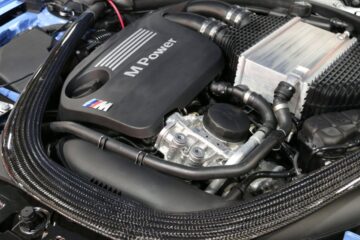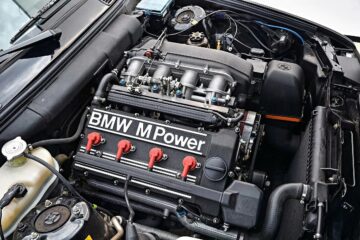The M10 engine was created by A. Von Falkenhausen. Baron, engineer and auto racer began to develop the power unit in 1958. The concern offered him to design a unit with a volume of 1.3 liters. However, the engineer thought that such a motor would not be suitable for BMW. He was convinced that cars need a unit with a volume of at least 1.5 liters. As a result, 4 years later he created an engine with the marking M115. It was produced (3.5 million units) until 1988, and its design allowed to change the volume of the motor within 1.5-2 liters.
Below we will be looking at the M10B18 engine.
M10B18 engine specifications
| Power, hp. | 90 – 105 |
| Fuel type | Gasoline |
| Volume, cm*3 | 1766 |
| Maximum torque, N*m (kg*m) at rpm. | 109 (11) / 4500; 140 (14) / 4000; 140 (14) / 4500; 145 (15) / 3500; 145 (15) / 4500 |
| Engine type | In-line, 4-cylinder, injector. |
| Cylinder diameter, mm | 89 |
| Number of valves per cylinder | 2 |
| Maximum power, hp (kW) at rpm. | 102 (75) / 5800; 105 (77) / 5800; 90 (66) / 5500 |
| Blower | No |
| Compression ratio | 8.8 – 10 |
| Piston stroke, mm | 71 |
Advantages
The first modification of the motor was installed in 1963 on the 1800 sedan. It had 90 hp and 143 Nm of torque. After 5 years, it had changed pistons and cylinder bore. Later came a 110 hp unit with dual carburetors and 147 Nm of torque. By tuning the engine, BMW engineers installed a sports camshaft, and the valve lift became high. Carburetors were taken from the company Weber. As a result, the engine power increased 130 “horses”, and its torque – 153 Nm.
Finally, the M10B18 powertrain was produced for almost 20 years (1969-1988). The most popular M10B18 unit had not only a carburetor, but also an injector. Compression was 11 all around. The motor was delivered to European markets with mechanical injection, and to Asian and North American markets with electronic injection. It is allowed to install a turbo.
The M10B18 carburetor was produced for 8 years (1980-88), had transitor ignition and was fitted to the 316/518 models.
Disadvantages
The M10B18 motor is considered a reliable and successful unit. Otherwise, it would not have been produced for almost two decades. However, it is not without various problems:
- When the engine overheats, cracks appear in the E30 M10B18 cylinder block. This can be judged by the emulsion appearing in the oil and the reduction of antifreeze in the expansion tank. By leaking into the engine crankcase, the antifreeze increases the wear of parts that rub together, leading to overheating;
- The plugs are fouled, the engine is throbbing and does not idle;
- Premature failure of the eccentric washer with rocker cam wear;
- Blown cylinder head gasket;
- The pump works, but the starter does not engage:
- Increased oil consumption;
- The starter clicks but won’t turn.
However, the M10B18 on the BMW E30 is characterized by easy repair and simple maintenance. For example, if the engine speed floats or rises when warmed up, or the engine stops working in neutral gear, the idle speed can be adjusted independently.
The unit is unpretentious to the quality of fuel and engine oil. At the end of the second decade of the 21st century. Because its production was discontinued 30 years ago.
CHIP TUNING
For this reason and chip tuning of the installation is not recommended. Their resource is completely rolled out, and it is impossible to find a motor without cracks. Therefore, there is no point in chipping it.



0 Comments